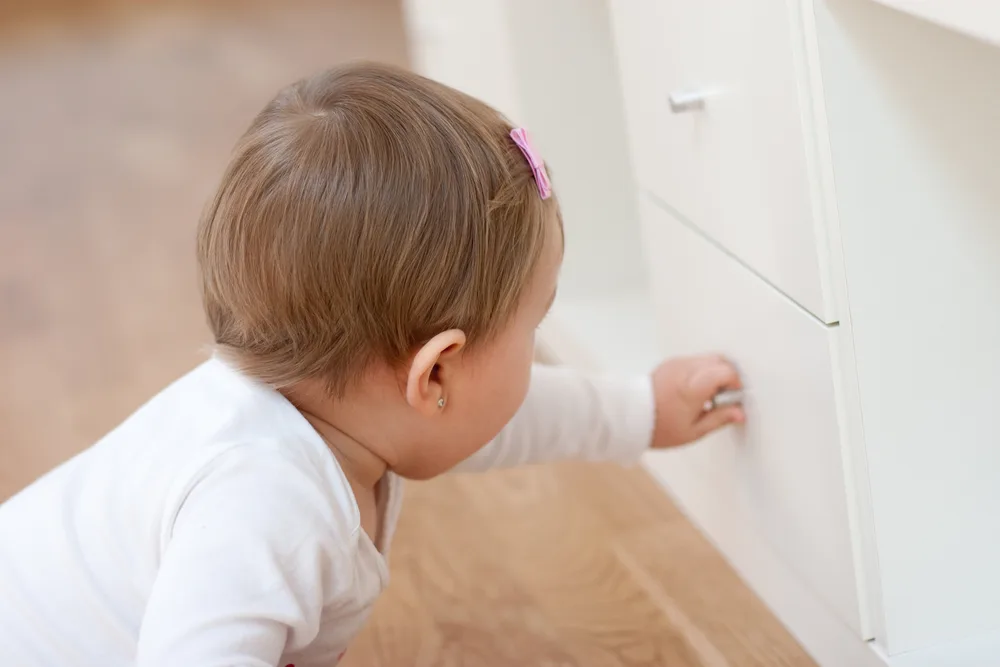When most people hear the words “baby proofing,” they only think of that big wall at your local baby store full of toilet bowl locks, cabinet locks and outlet covers. However, to really cover the basics of baby proofing you need to make sure your whole house is ready for a baby who’s on the move. But not to worry—creating a safe nursery and home for baby doesn’t mean that you need to compromise on the design style that you’ve dreamed about.

1. Your first step should be to get down on your hands and knees, and crawl around your home looking for hidden dangers. Look for anything you can pull down on top of yourself or that could be hiding underneath the couch or shelves. This includes any pet bowls or pet toy storage.
2. Be sure to choose a paint for the nursery that contains no VOCs (volatile organic compounds) as they are linked to many adverse health effects and birth defects.
3. Babies spend up to 16-18 hours a day sleeping and a lot of that time is spent in the crib, so you want it to be the safest place possible. The only thing that should be in the crib is a mattress covered with a tight, fitted sheet, and there shouldn’t be a gap between the mattress and the sides of the crib.
4. Your monitor is meant to allow you to keep an eye on your baby to ensure that she is safe and sound, but it can also be a hazard to baby if placed too close to the crib. All monitors and their cords should be placed at least three feet away from any side of the crib.
5. Don’t hang any heavy artwork or mirrors above the crib, and try not to place the crib near a window or air vent in the nursery. Avoid using floor lamps or curtains that hang to the floor. Babies soon become toddlers that pull on things, and all of these things will become a danger.
6. Ensure that your diaper changing pad is properly secured to the changing table. Place your diaper pail within reach so that you can always keep one hand on baby.

7. You do need to visit that baby proofing wall at your local baby store at some point, and you should do it before the baby arrives if possible. Install outlet covers with sliding outlet plates, cover all sharp corners and anchor all furniture to the wall to avoid tip-over accidents. Doing these simple things now will give you a head start before you reach those busier days when your little one is on the move.
8. Secure all obviously dangerous areas in your home. For example, put gates at the top and bottom of your stairs and around any fireplaces. Ensure all cleaning supplies and laundry supplies are in cabinets that baby cannot access.
9. Make sure your home has working smoke detectors and at least one carbon monoxide detector. Install a smoke alarm over the door to the nursery, as well as in every other bedroom of your home.
By educating yourself and following these baby proofing basics, you can set your mind at ease and be sure your baby will be safe and sound!
